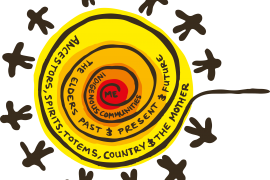This brief case study promotes the benefits of a collaboration between an academic, students and an educational designer to refresh the design of the PHAR3825 Pharmaceutical Skills and Dispensing Canvas site. The aim of this collaboration was to increase student engagement with the course materials in order to improve achievement of the learning outcomes.
The project came about through the Educational Design Accelerator, an initiative through Educational Innovation that enables challenges with teaching and learning to be addressed by a cross-disciplinary team approach over a period of a few weeks or months. In this instance Dr Jessica Pace, Associate Lecturer in the Sydney School of Pharmacy, identified time management and the completion of tasks as the two big issues for her aspiring pharmacy students in the second last year of their degree. Jessica’s goal was to better support and enable her students’ need to finish this unit of study having developed good checking processes to dispense medications so that they can be used safely and effectively in a real-world context.
The Educational Design Accelerator process
Step 1. Identifying an issue and possible solutions
Jessica identified time management and the completion of tasks as the two issues for her students. Essentially students were not completing prework before their workshops which meant they were coming unprepared, time was lost during the face-to-face sessions, and educators were having to spend time chasing up required documents which delayed finalising marks.
Through a series of short professional conversations (Pleschová, G. et al.) that took place a few weeks before the start of Semester 2, we explored features of the learning environment that could be contributing to these issues of time management and task completion. By switching our attention to the learning environment and identifying potential barriers in the Canvas site design, we were able to come up with design solutions to remove those barriers.
We decided to look at ways we could increase signposting for students to help them navigate the Canvas site more effectively, monitor their own progress and meet deadlines.
Step 2. Testing an idea
Continuing with our professional conversations we came up with a list of Canvas design changes that we knew we could implement before the start of semester. These included:
- Re-organising the modules page by weeks rather than topics.
- Including a learning goal at the top of every Canvas page, giving students clear direction about what to expect from that session, be it a lecture, workshop or assignment.
- Using consistent headings and icons on each page.
- Repeating essential information about pre-work and workshop times.
By week 6 of the semester we actively sought student feedback on the usability of the refreshed Canvas site through a short Qualtrix survey comprising 6 questions:
- How easy is it to find the information you need for each week?
- Which of these features do you use to find the information you need? (You can select more than one)
– Canvas vertical menu (left of screen)
– Module summary page
– Page headings and sub-headings
– Icons
– Hyperlinks
– Next and previous buttons - Each fortnight you submit a Drug Table as an assignment. What suggestions do you have for improving this document and the way you interact with it?
- What do you like about the PHAR3825 Canvas site design and why?
- What don’t you like about the PHAR3825 Canvas site design and why?
- Are there features in other Canvas sites you think would be helpful here?
We were intentional about engaging with students mid-semester so that we could respond to their feedback in time for them to experience firsthand the changes we made. This decision was inspired by a presentation delivered by Hamish Fernando at the 2022 Sydney Teaching Symposium – Five simple approaches towards building strong student-teacher relationships in large cohorts and reflects a number of the Core pedagogical principles including clear communications and expectations, using engaging approaches to content delivery and measuring and supporting engagement.
Step 3. Reflecting on the data
We were really pleased to get a 50% response rate to the survey and impressed by the level of constructive feedback to the open-response questions. As the graph below shows, there was overwhelming support for the organisation of content by fortnightly sessions in the modules page and for the use of headings and sub-headings to guide students to the information they needed and to know what to do with it.
I like how everything is organised and sectioned according to the sessions in modules, this makes it easier to follow, find info and know where we’re up to.
Very organised, and ensures that each part has an explanation.
Mid-semester student feedback on the use of modules

There was mixed feedback about the ‘mark as done’ feature that required content to be completed before access was given to new content. Some liked how this feature supported them with their organisation and planning while others found the process tedious, required a lot of clicking through pages and could not see the value.
Having to mark tasks as done to unlock the next week’s content. I especially like this function because it helps me see exactly which tasks I have or haven’t completed yet.
Can tick the tasks I have completed – it is a quick way to check if there is anything I need to do.
I don’t like that you have to complete all tasks before the next week unlocks because sometimes I’m behind.
I don’t like how we have to tick off everything to see the next module because it is tedious, but I understand that it is important so we don’t forget to do anything.
Mid-semester student feedback on the use of the Canvas “marked as done” feature
Students also provided valuable feedback on the design of the Drug Table assignment template that they were required to complete and submit each fortnight. The original template was presented to them as a downloadable Word document. Students found the Word doc became quite cumbersome and unwieldy as they added to it over the semester. Students requested an alternative format that could offer greater flexibility for them to customise the layout and the information they needed to submit.
Step 4. Designing the next iteration
We were able to respond to some of the feedback immediately and make further changes to the unit design for the remainder of the semester. This included:
- Consolidating assignment information onto one page in order to reduce the number of pages students had to click through.
- A redesign of the Drug Table assignment template. Students now have 3 options: the original Word doc, an Excel workbook that offers greater flexibility in how information is presented and customised, or a format of their choice. Providing a choice of templates inadvertently created a teachable moment. Jessica identified the need to be explicit with her students about the purpose of the assignment which was about being prepared and accurate when administering drugs.
This process of reflecting and responding to student feedback highlighted a need to keep the conversation going.
We wanted to tell the students about the changes that had been made in response to their feedback, and to provide an explanation for the changes that we did not make. This resulted in the creation of a short video shared with students on their return from mid-semester break:
We have gathered anecdotal evidence of the impact of our Canvas site design through the positive student survey responses and the improved time management and task completion of students compared to previous semesters. The next iteration of PHAR3815/3825 will maintain the module structure organised by weeks and continue to evolve a clear, predictable page structure. We now have time to explore the student request to present lecture recordings differently and make use of the Canvas menu option to store ‘Recorded lectures’. Jessica will continue to share the intentional Canvas design features with her next cohort of students and seek their feedback.
The authors would like to thank Kria Coleman for her collaboration and expertise in developing the Qualtric survey and Catherine Chung for her expertise in Excel.
References
CAST (2022) UDL on Campus: Executive functioning in online environments
Pleschová, G. et al (2021) International Journal for Academic Development Volume 26, Issue 3: Special issue: Conversations on Learning and Teaching: Changing Conceptions and Practice.
Jennifer Pusateri, Buddy Hall (2019) How to support executive function with Canvas (LMS) features. UDLHE Digicon





